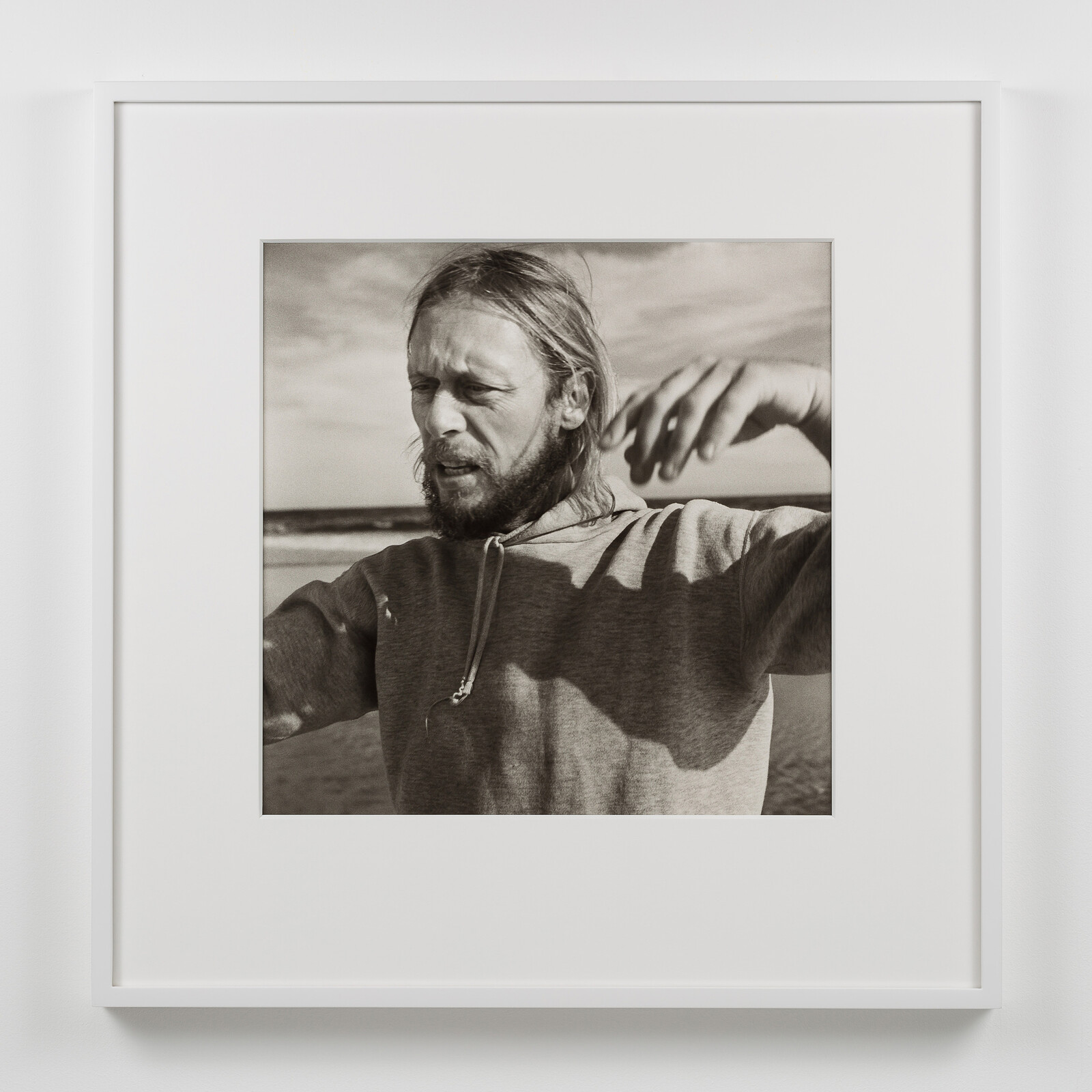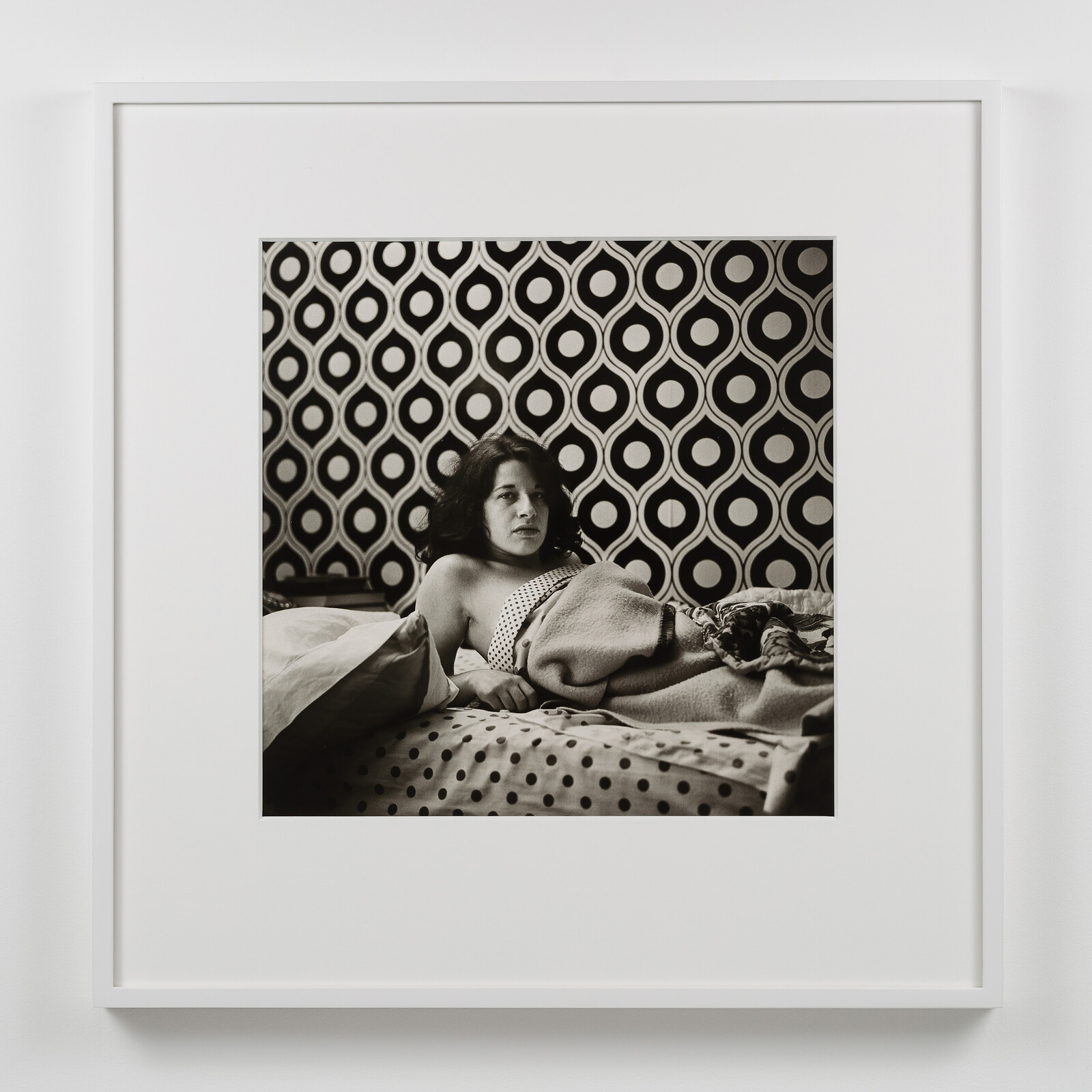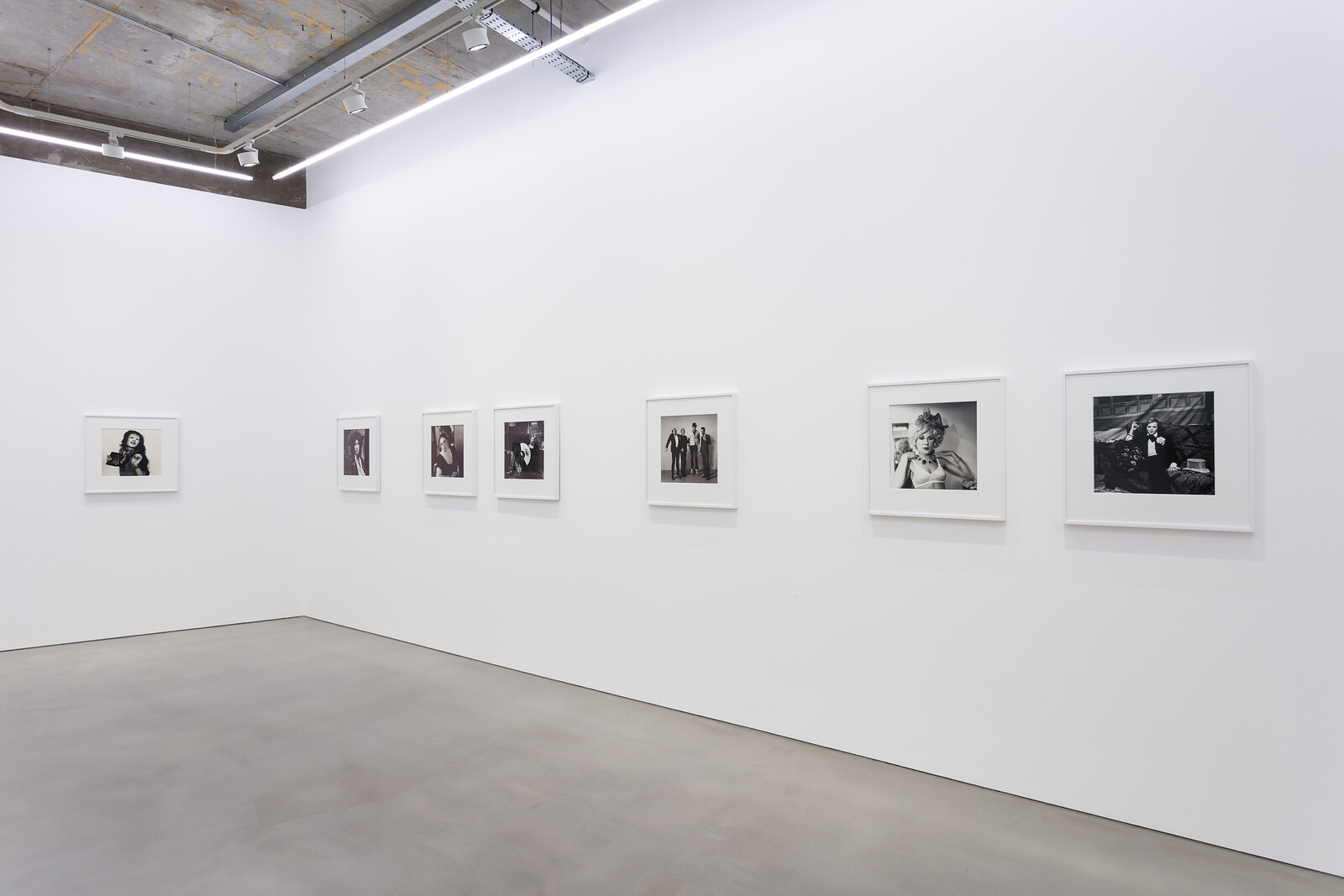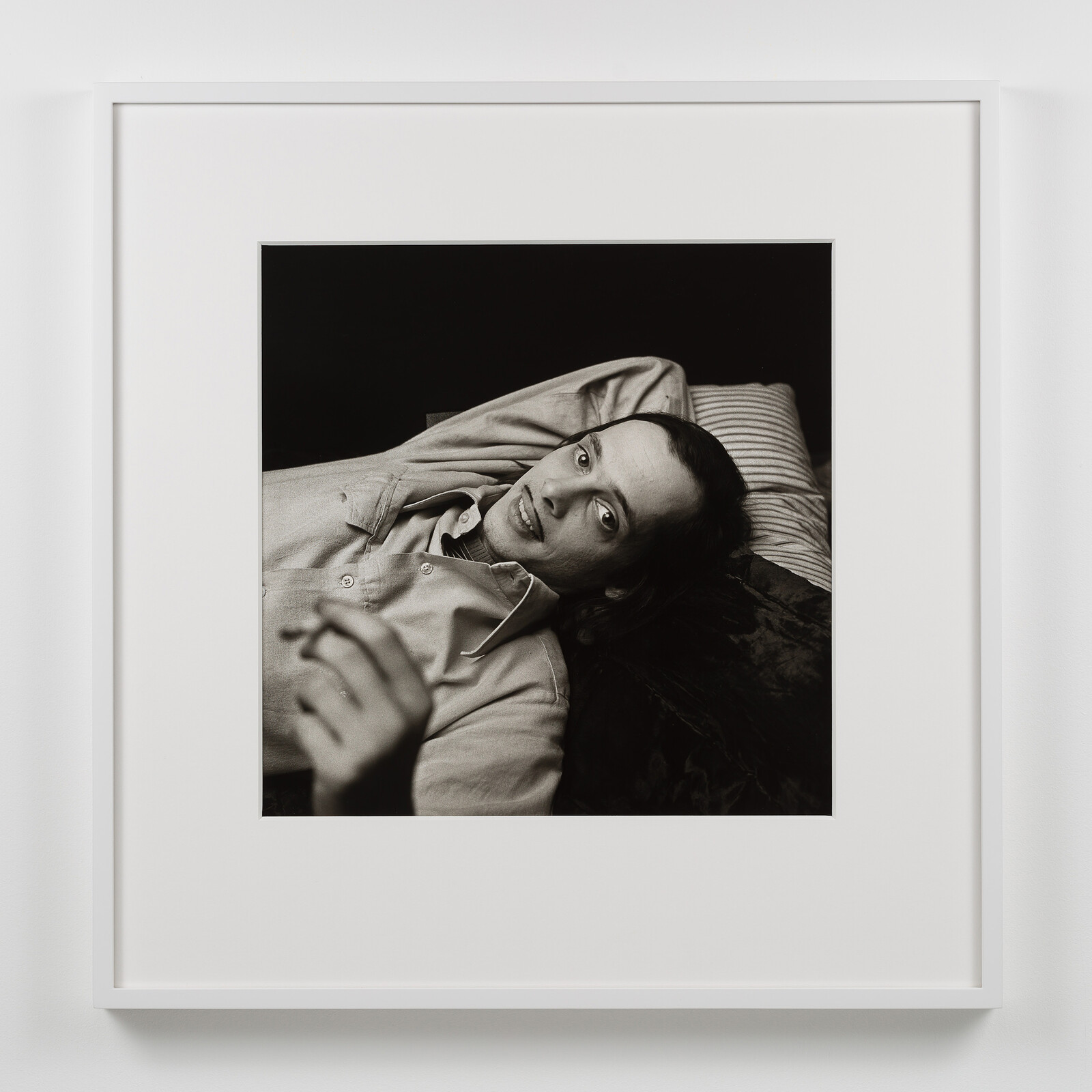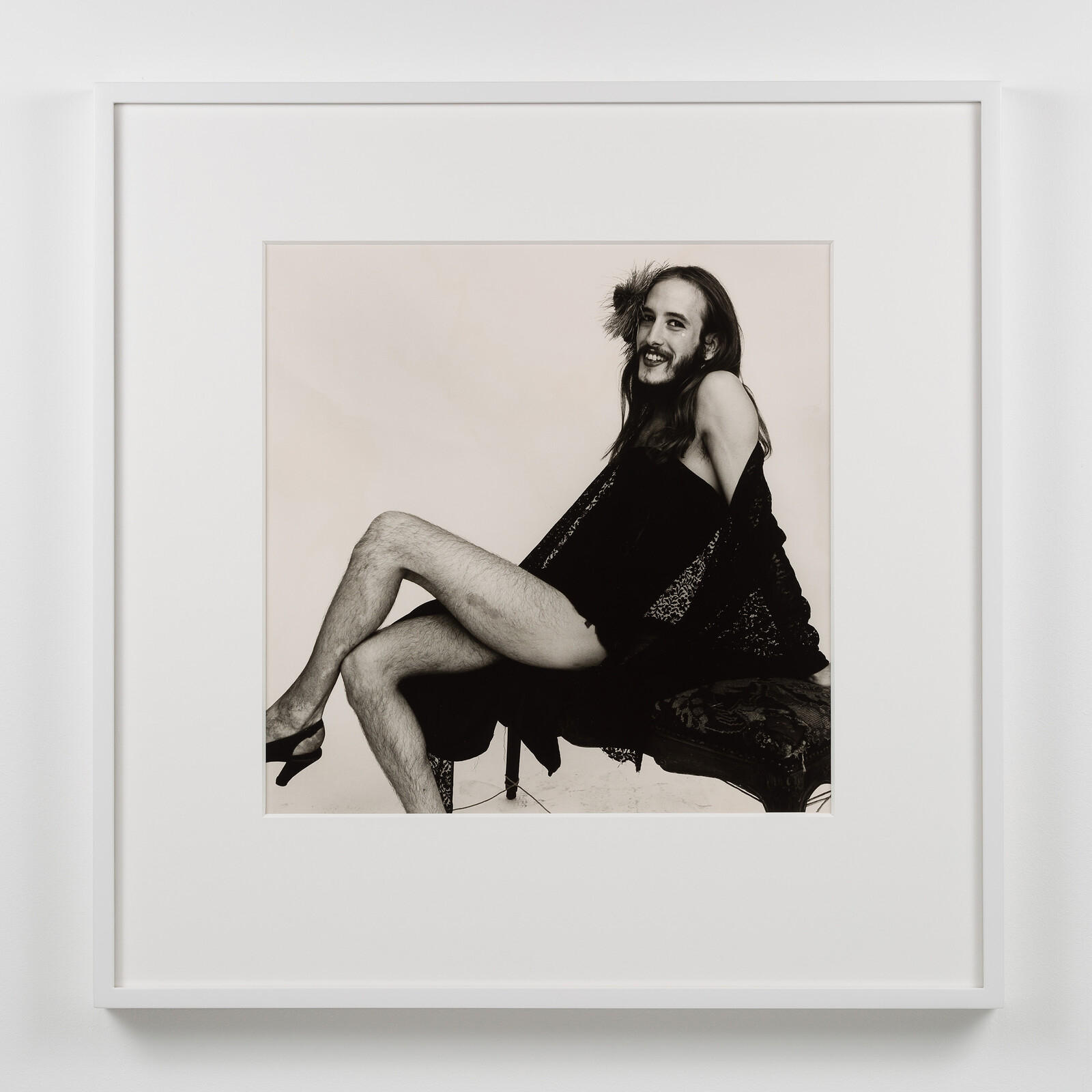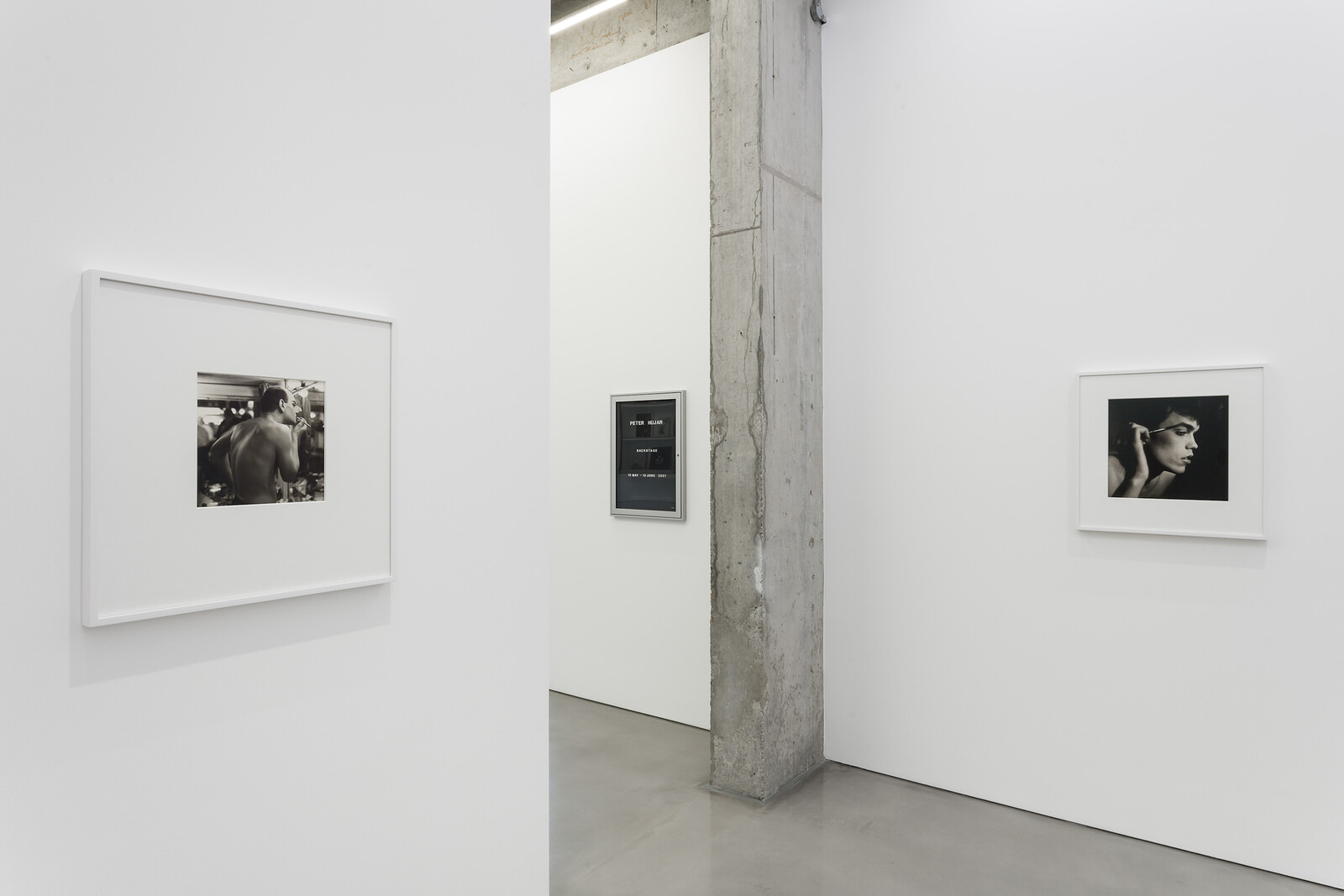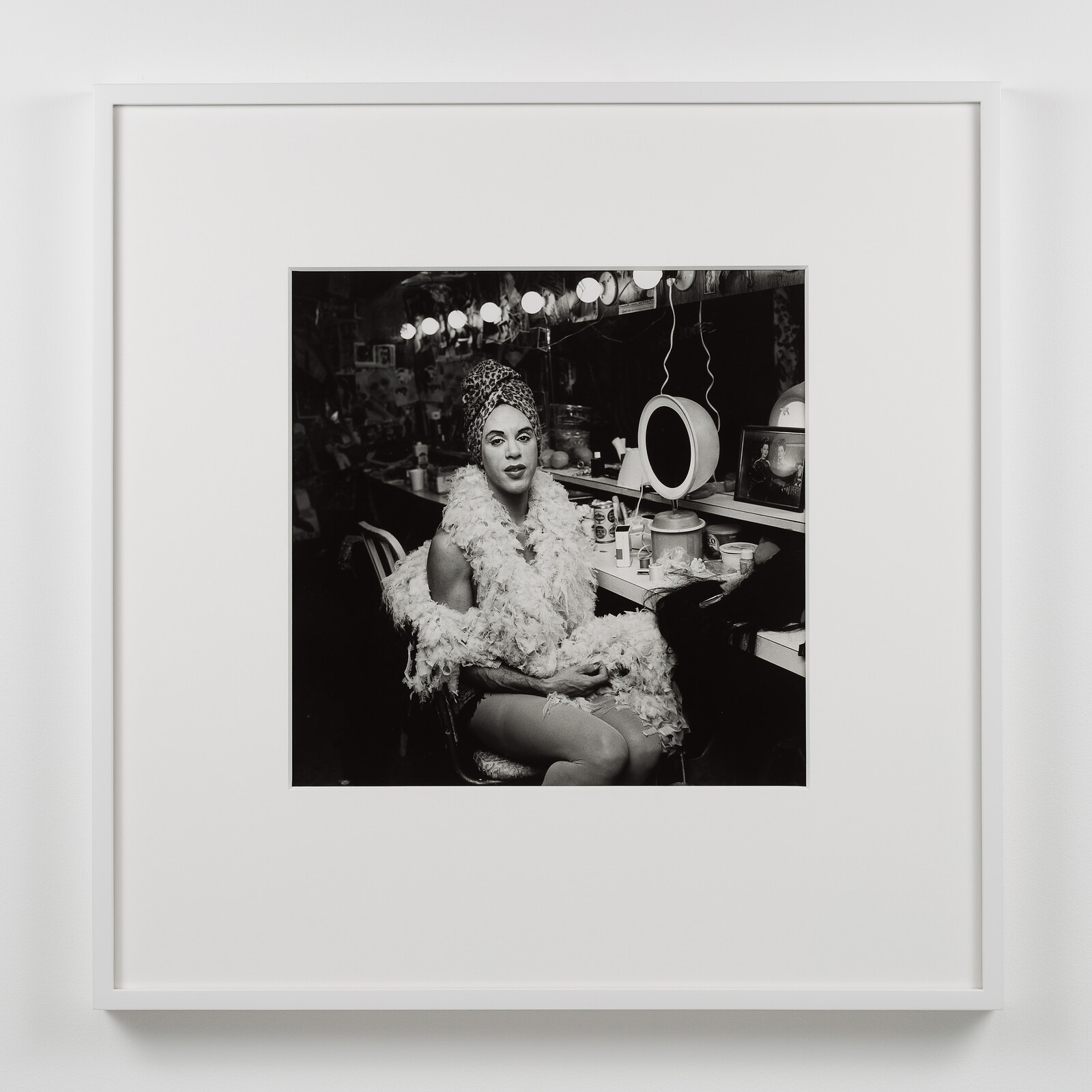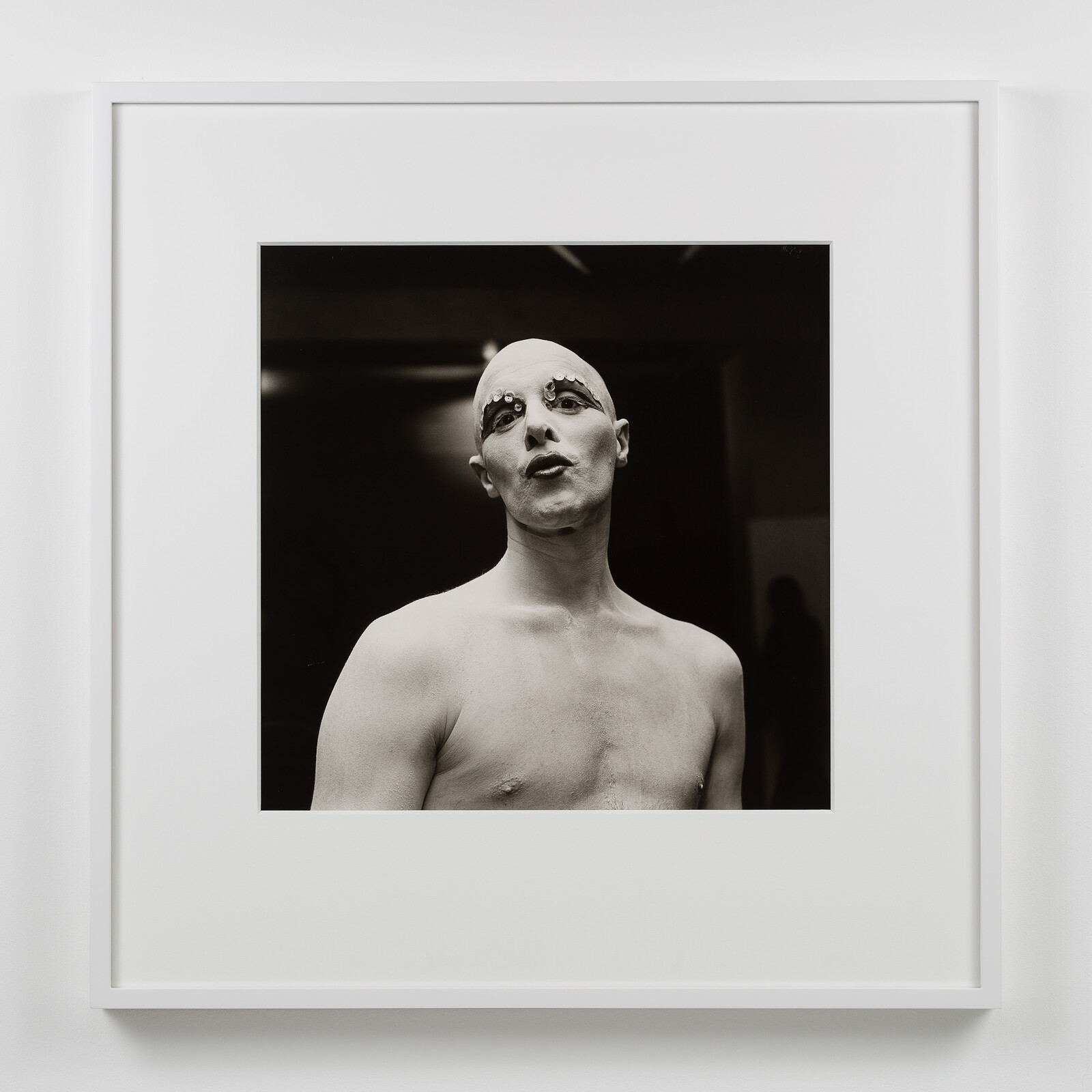“Backstage” is the third solo exhibition of Peter Hujar’s work to be presented at Maureen Paley’s London space since 2008, when the gallery took responsibility for the artist’s estate in the UK. The work is presented across two rooms; a larger space that almost exclusively shows portraits of artists from New York’s thriving drag performance scene of the 1970s, either preparing their costumes and make-up or gloriously composed backstage. These silver-gelatin prints were made by Hujar himself, with three exceptions: a portrait of the filmmaker John Waters, another of his muse Divine, and a group self-portrait showing Hujar jumping in the air with friends. These are all estate ink prints made by Gary Schneider, the artist and master printer trained by Hujar and now widely regarded as one of the finest printmakers alive. He is also the only printer authorized to make editions of Hujar’s work.
The second, smaller room displays four further estate prints: an extraordinary nude self-portrait entitled Seated Self-Portrait Depressed (1980); a portrait of Hujar’s friend the writer and raconteur Fran Lebowitz reclining in bed at her parents’ home in Morristown; one of Hujar’s sometime lover, protégé, and friend, the artist David Wojnarowicz, sparking up a cigarette on a Manhattan street with studied noir insouciance; and, finally, a portrait of an earlier lover, the artist Paul Thek, looking windswept and mercurial, a Renaissance Jesus in a hooded sweatshirt. This room, then, is clearly meant to serve as the backstage to the artist’s life.
Hujar was a gifted technician in the darkroom, and the tonalities in the lifetime prints are formidable. The crystalline light and gradations of oneiric darkness suggest lessons learnt during the time he spent in Italy in the late 1950s and ’60s, recalling the chiaroscuro of Italian baroque painting as well as the neorealist and post-neorealist aesthetic of the Italian cinema of the 1960s, perhaps most overtly the carnival and club scenes from Fellini. It is the estate print of Divine, though, that contains the most extraordinary passages of tonality. The folds and drapes of the dark velour upon which the subject reposes achieve an almost metaphysical quality at the point where they meet the white tones of Divine’s shirt and his powdered skin, or where it contrasts with the faux terrazzo of the linoleum floor. On occasion Hujar ostentatiously pushes the dark tones in his photographs toward melodrama, as in the famous image of Candy Darling on her deathbed, but the folds here bring to mind T. J. Clark’s comment about the word drapery, “whose matter-of-factness conceals, in the greatest artists, metaphor after metaphor of human strangeness.”1
Any show of Hujar’s work is faced with complex questions concerning contextualization. His images are famous for their intimacy, empathy, and pathos, but those qualities are heightened by the viewer’s awareness that so many of their subjects have died from AIDS or complications arising from the disease since the early 1980s. These are images of communities that suffered and lost terribly, whose inheritors often suffer terribly still. Though Hujar’s work is compositionally quite transparent, untangling the stakes—political, ethical, aesthetic—of these images’ affective qualities is not straightforward. Susan Sontag, in her introduction to the only monograph devoted to Hujar’s work to be published in his lifetime, Portraits in Life and Death (1977), wrote that “all photographs are memento mori,” and it is difficult to read these images without funereal overtones, difficult not to read them as premonitions and, retrospectively, as sacral objects. To some degree this exhibition plays against such a reading. For a start, there is very little context given besides the title, date, and print origin of each work. The choice to show and celebrate mainly one type of subject also seems to gesture toward such an aim, for without the lyrical and pastoral images of animals, children, water, and landscape that Hujar chose to show along with his human portraits, or the famous images from the Sicilian catacombs that make up the second part of Portraits in Life and Death, these images seem less burdened by existential weight and Whitmanian generalization. Which is not to say the show shrugs at history or politics, simply that it chooses to play up the intimacy and joy of these images rather than the melancholy aspects. It seeks to claim back those black tones for a defiant melodrama rather than void or brute facticity.
That the 1975 portrait of Paul Thek is placed at the end of the show seems important in this regard. It is slightly anomalous in that it is the closest Hujar comes to something like a decisive moment. Unlike the majority of the portraits, Thek is not quite centered and he does not look into the camera; rather he is captured on the move, mid-gesture, his hands raised, grimacing, apparently trying desperately to express or emphasize a point. He exceeds the frame, pushing against the classical square format that Hujar almost always used. Even the beach, sea, and sky that form the background to the image are not allowed the romantic or existential pathos they would claim if given more space. The image is all about Thek’s energy and presence, and the movement of the dialogue between camera and body, since the composition invites one to read it as having been shot mid-conversation, with Hujar walking at Thek’s side. It is an image that speaks to the affective complexity of their relationship, and of the emotional and psychological difficulties by which Thek was afflicted, but it is also saturated with the living, expressive, individual being. If these images are political then it is in the following way: that they say of their subjects that they want them to be.
T. J. Clark, “Rebalancings,” London Review of Books (December 20, 2018), https://lrb.co.uk/the-paper/v40/n24/t.j.-clark/rebalancings.


